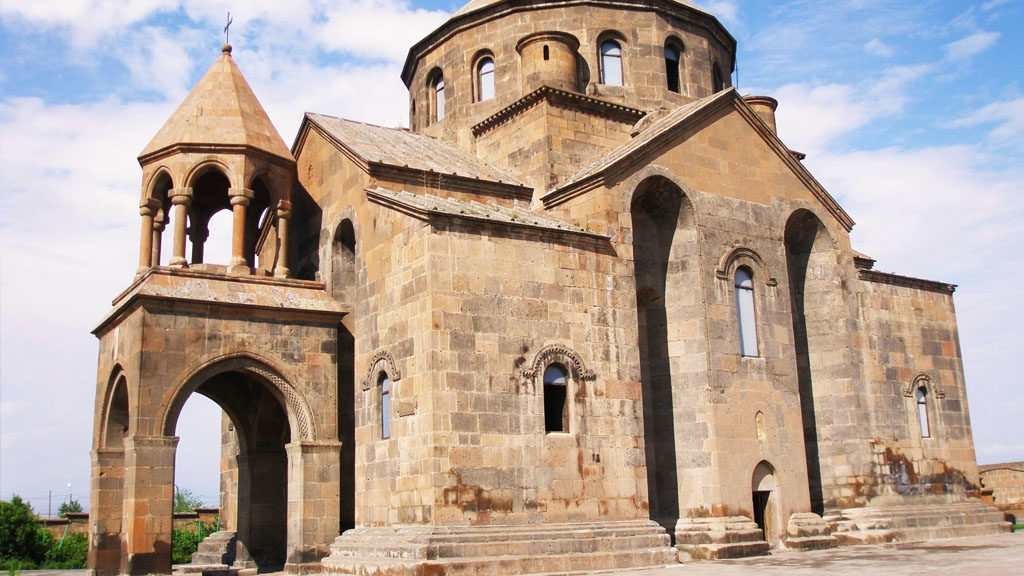- USD
- RUB
- EUR
- AMD
Cultural Heritage of Armenia in UNESCO List
Cultural heritage of Armenia included in the list of the UNESCO make Armenians feel proud and make us more reverently and carefully treat the cultural values of Armenia, the beauty and uniqueness of which have conquered the hearts of not only Armenians, but the nations of the whole world!
Tangible Heritage
Haghpat Monastery
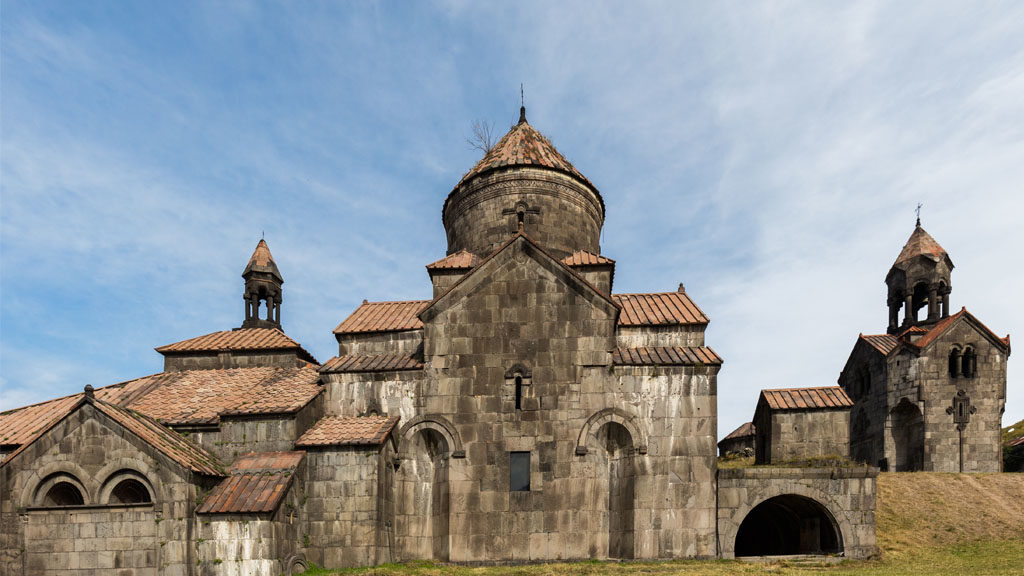
Haghpat Monastery is a medieval monastery complex in Haghpat village of Armenia, and it was included in the list of the UNESCO World Heritage Sites in 1996.
The monastery was founded in 976 during the reign of Ashot III the Merciful and it was one of the spiritual centers of Armenia which had a large territory in the X-XIII centuries. The churches – Surb Grigor Lusavorich (St. Gregory the Illuminator) and Surb Astvatsatsin or Khatunashen are located on the territory of Haghpat Monastery.
Sanahin Monastery
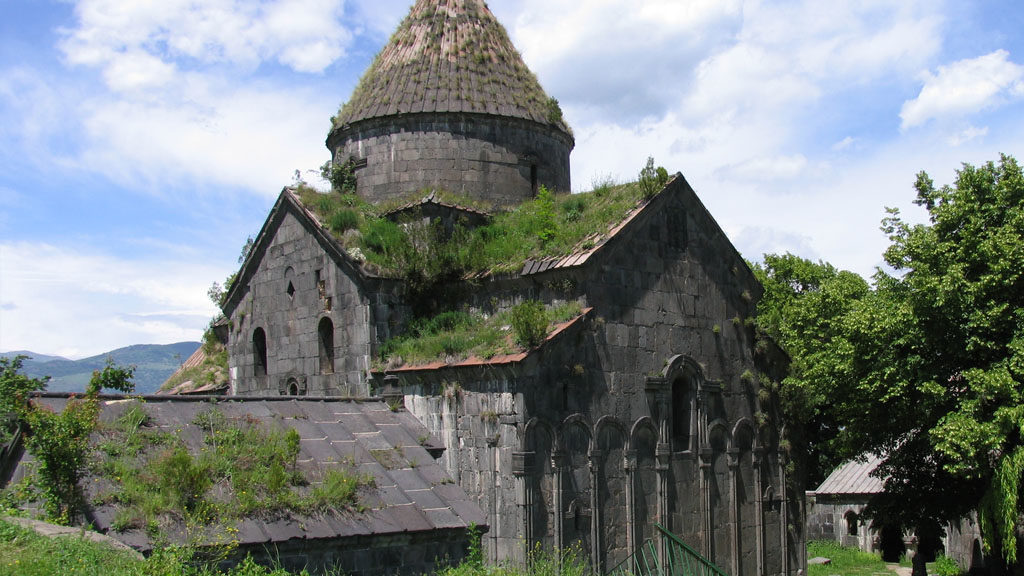
Sanahin – one more cultural heritage of Armenia, which is located in the picturesque Lori Province, in a few kilometers west of Haghpat Monastery, together with which it was included in the list of the UNESCO World Heritage Sites in 1996.
Travel to Armenia and discover the cultural values of this ancient country that will not leave anyone indifferent!
Etchmiadzin Cathedral

Etchmiadzin Cathedral is the mother church of the Armenian Apostolic Church and administrative headquarters of the worldwide Armenian Church, and together with the churches Hripsime and Gayane, that are located near Etchmiadzin Cathedral, in 2000 was included in the list of the UNESCO World Heritage Sites. The wooden cathedral was first built in the early IV century, soon after the adoption of Christianity as the state religion, the monastery was rebuilt in stone in the V and VII centuries.
Church of St. Hripsime
The church was built in 618 on the place where Saint Hripsime with the abbess Gayane was martyred by the king Tiridates III of Armenia before Armenia accepted Christianity as a state religion in 301.
The churches of Armenia are the greatest cultural heritage of this ancient country!
Church of St. Gayane

The Church of Saint Gayane – Armenian church that was built in 630 and in 2000 was listed in the UNESCO World Heritage Sites.
The church was built on the place where the abbess Gayane was martyred with other nuns by the king Tiridates III of Armenia before Armenia accepted Christianity as a state religion. The tomb of Gayane, who was later declared a saint of the Armenian Apostolic Church, is located here, in the base of the church.
From the VII century to the present day, the design and interior decoration of the church remained almost unchanged. Only during the renovations in the XVII century the dome and some ceilings were partially changed.
Travel to Armenia and discover the real pearls of the homeland of Christianity!
Zvartnots Cathedral
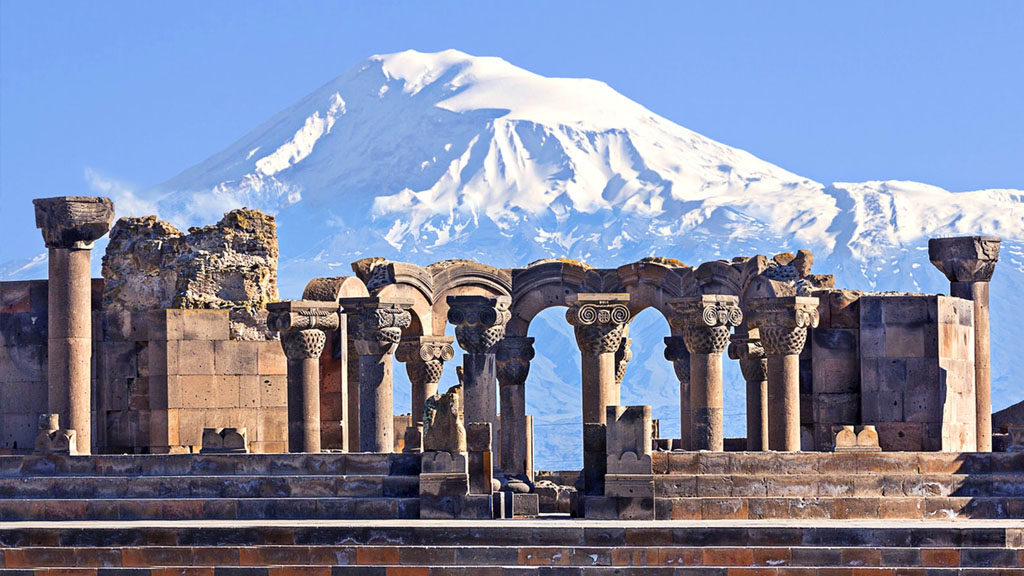
In the course of history, many joyful and sorrowful events took place in the life of Armenia, and one of the tragic events was the earthquake of the X century, which half-destroyed the VII-century temple Zvartnots – the temple of early medieval Armenian architecture, which is located not far from Yerevan and Vagharshapat.
Zvartnots in translation from ancient Armenian means “celestial angels cathedral”.
In 2000, the ruins of the temple and the archaeological area around it were included in the UNESCO World Heritage List.
Travel to Armenia and learn more about the history of humanity!
Geghard Monastery
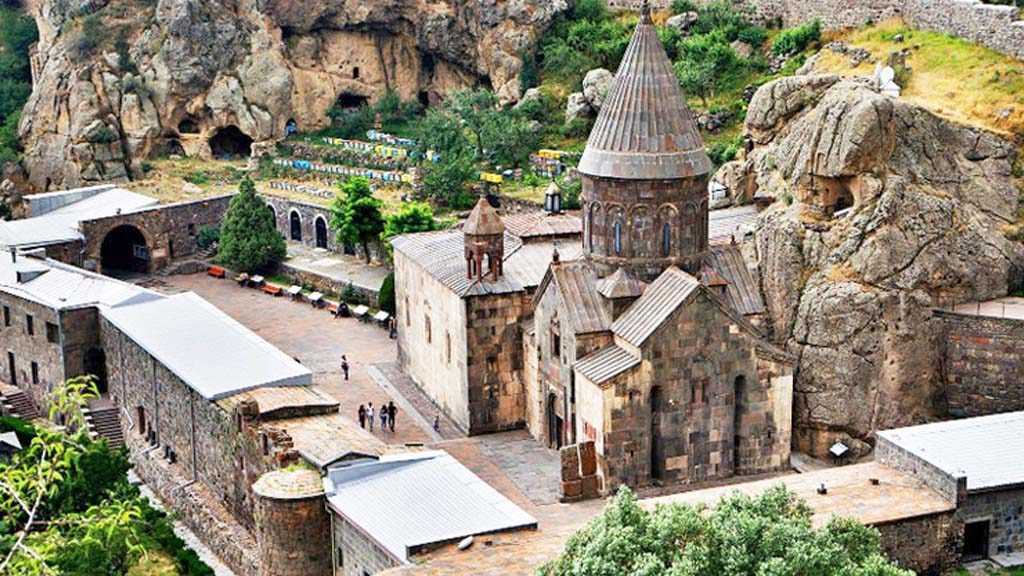
Geghard monastery complex is a unique architectural masterpiece in Armenia, which was listed in the UNESCO World Heritage Sites. Geghard monastery, which is one of the most visited Armenian cultural heritages, is in the Kotayk Province.
The full name of the monastery is Geghardavank, which means "the Monastery of the Spear". It originates from the spear which had wounded Jesus at the Crucifixion, allegedly brought to Armenia by Apostle Jude, called here Thaddeus, and stored amongst many other relics. Now it is displayed in the Etchmiadzin treasury.
Upper Reaches of the Azat River

Azat River has an amazing beauty and it is in the Kotayk and Ararat (mainly) regions of Armenia. The upper reaches of the river were listed in UNESCO World Heritage Sites.
Azat River is famous for its rich fish stocks; therefore, it is very popular among the fishermen.
The beauty of Armenia is just breathtaking!
Intangible heritage
Duduk

Armenia is an ancient country with a unique culture, and folk music, particularly Armenian musical instrument duduk, is its integral part!
Duduk – there is nothing like the music of this little apricot twig! Its music touches the hearts of everyone – even the most serious people!
The music of the Armenian duduk was recognized as a masterpiece of the UNESCO Intangible Heritage of Humanity.
Travel to Armenia – to the homeland of world masterpieces!
Armenian Khachkars
Cross-stone is one of the symbols of Armenian culture, symbol of a new and eternal life. Cross-stone is a special kind of art based on ancient national traditions, distinguished by diversity and richness of forms.
In 2010, cross-stones, their symbolism and craftsmanship were inscribed in the UNESCO List of Intangible Cultural Heritage!
Travel to Armenia and discover how and when the first cross-stones appeared, where they were put, and what importance they had.
Armenian Epos Sasuntsi Davit
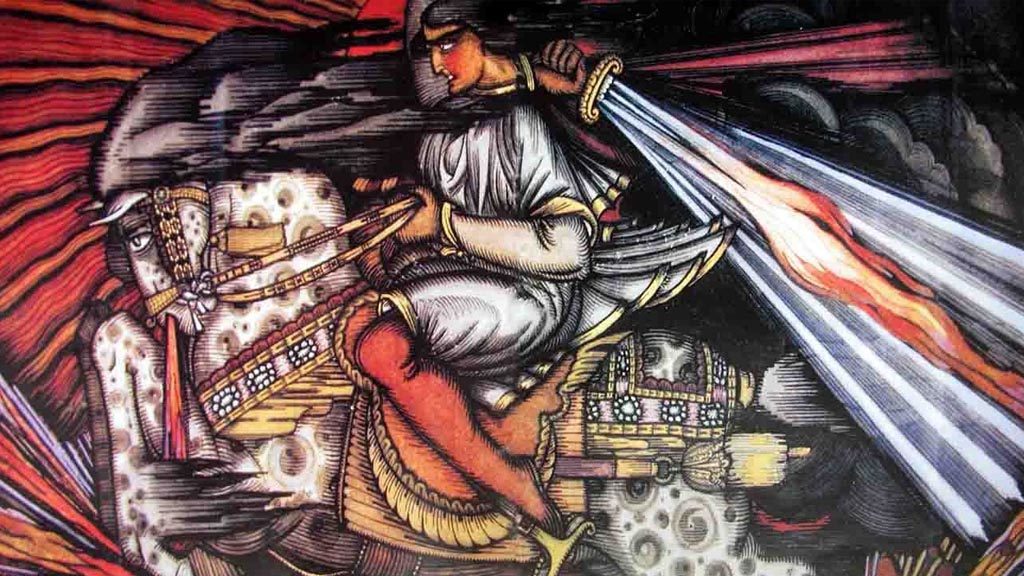
Armenian epos “Sasuntsi Davit” – an epos that is known by every Armenian, and is absolutely loved by them, an epos that reveals the Armenian spirit and strength, an epos that is recognized as a universal cultural value.
Armenian epos “Sasuntsi Davit” was included in the UNESCO List of Intangible Cultural Heritage.
Learn Armenian literature and discover the true Armenia!
Lavash
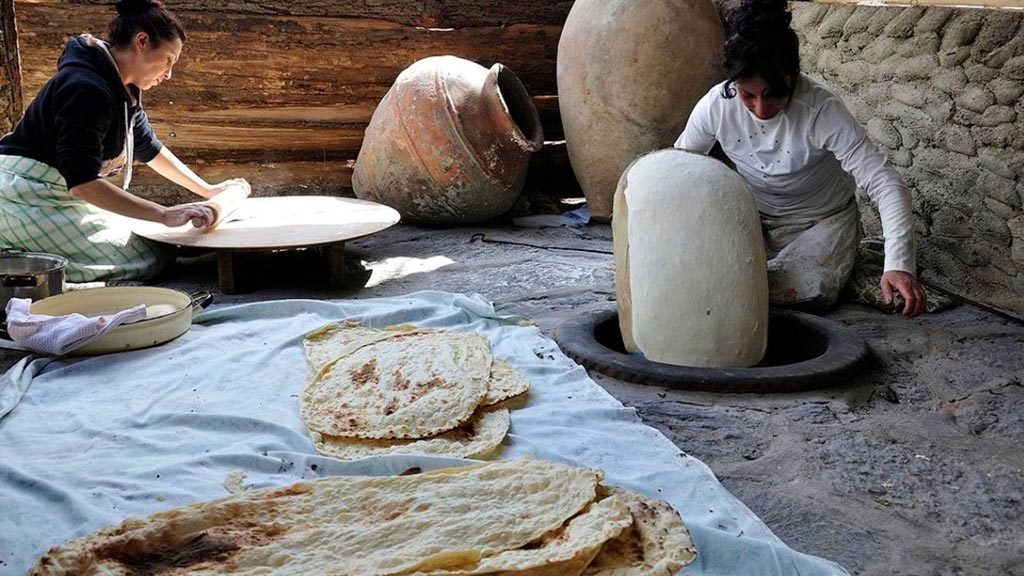
Armenia has a unique culture and its most delicious part is lavash – traditional Armenian bread, which was included in the UNESCO List of Intangible Cultural Heritage of Humanity!
Each part of Armenian culture has its own story and legend, and lavash is not an exception!
According to the legend: Lavash saved the life of the Armenian king – Aram, and from that time on, he demanded to bake only lavash in Armenia, not any other kind of bread.
Organize an unforgettable tour to Armenia and discover all the secrets of Armenia, as it is a country, where even the bread has its legend!
Kochari
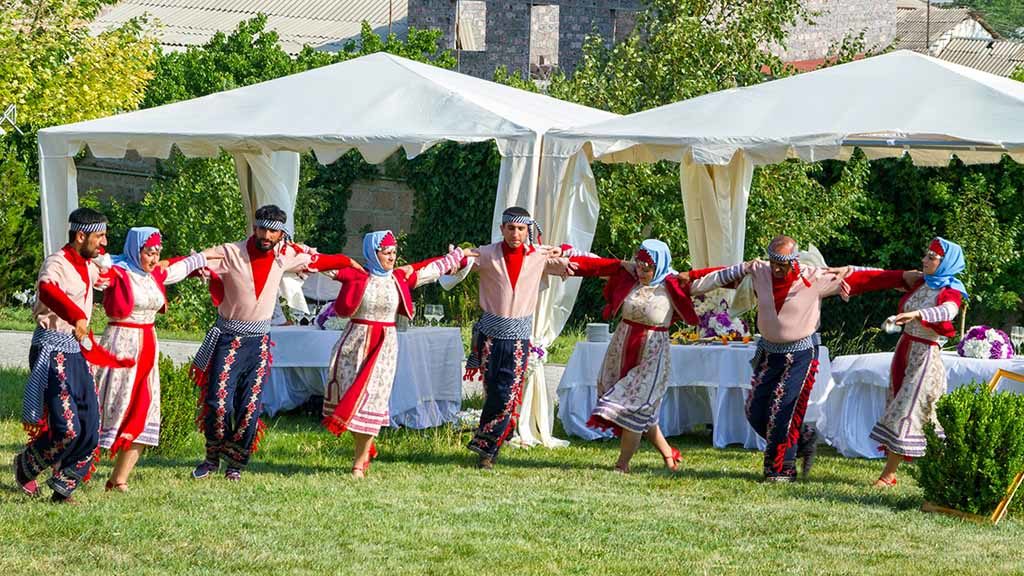
Armenia is a country with century-old history, which is reflected in each element of the Armenian culture.
Armenian folk dances such as kochari, trakhag, berd, yarkhushta, etc. form the inseparable part of the Armenian culture.
The strength of a nation is in its unity, and exactly that can be seen during the Armenian folk dance Kochari, when the dancers stand abreast, holding each other's hands or putting each other's hands on their shoulders!
The Armenian folk dance Kochari was recognized as a masterpiece of the UNESCO Intangible Heritage of Humanity.
Travel in Armenia will help you to discover the cultural heritage and values of this ancient country and putting together all the small parts of the Armenian culture, you will discover its unique beauty and you will just fall in love with this land of sun – Armenia!
RECENTLY POSTS
May Holidays in Armenia
15.03.2023
The best delivery services in Yerevan
05.03.2023
Travel to Armenia in December 2023
01.12.2022
The Best Viewpoints in Armenia
15.10.2022
Travel to Armenia in October 2023
20.09.2022
Travelling in Armenia by Car
06.09.2022
7 Reasons to Have Dilijan in the Tour Program in Armenia
13.07.2022
Travel to Armenia in July 2023
17.06.2022
Copyright ©️ 2016 CONCIERGE TRAVEL AM LLC
Powered by WEBS




